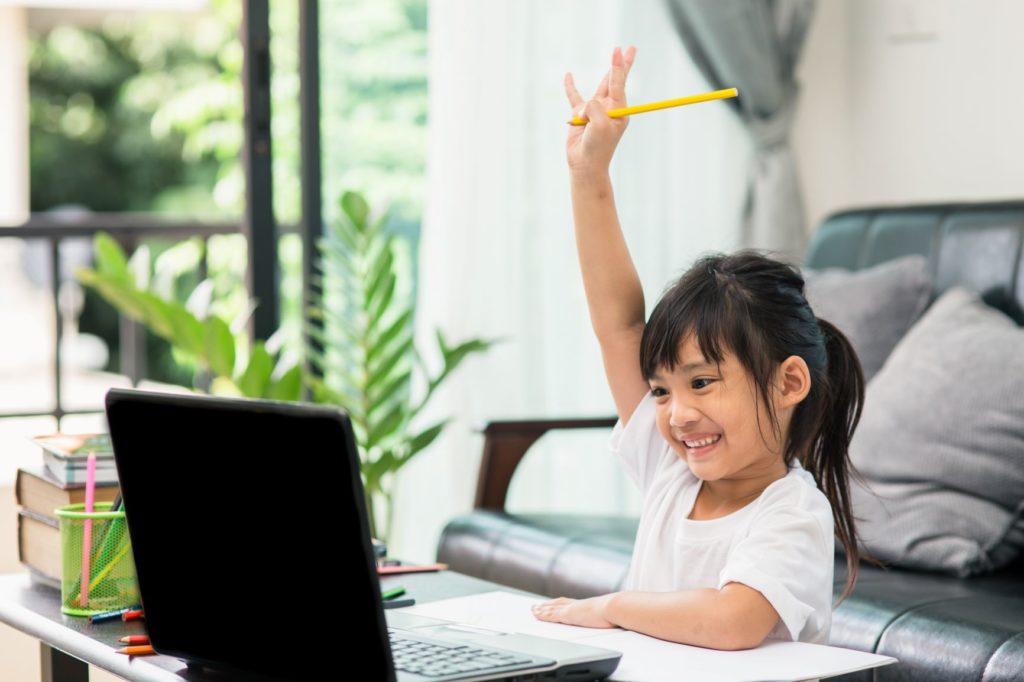my learning manifest
My goal as an educator has always been to provide a safe learning environment in which my learners feel empowered to create, collaborate, communicate, and think critically. I agree with the constructivist teaching approach from the minds of Dewey, Piaget, and Vygotsky. Constructivism is an approach to learning that holds that people actively construct or make their own knowledge (McLeod, 2019). That knowledge is influenced by the interaction of prior knowledge and new events. The idea is that learners build new knowledge upon the foundation of previous learning and this prior knowledge influences what knowledge a learner will construct from new experiences. That means learning must be an active process rather than passive. That means making meaningful connections between prior knowledge, new knowledge, and the processes involved in learning (McLeod, 2019). According to Vygotsky, he believed that our environment played a significant role in how we think and make meaning. Our cognitive development stems from social interactions within the zone of proximal development.
With that said, I want to provide a student-led experience in which students are intrinsically motivated using researched based instructional strategies, such as personalized learning and differentiation, and digital learning tools. I want to customize the learning experience for each learner according to their skills, abilities, and preferences. My hope is to improve student engagement, achievement, and outcome.
Over the past year, I have revamped my traditional classroom and teacher-led instruction into a modern classroom with a blended-learning environment that provides students a more personalized learning experience. However, despite all the work I put into this initially, I received mixed results. I was disappointed with the lack of student engagement despite the fact students could now work at their own pace, rewatch my prerecorded lectures, and differentiation based on mastery. Now, ten weeks into the school year, the feedback I have received from students, parents, and teachers using my curriculum have made me learn more about technology and pedagogy. I realized that even though my students all have devices, technology alone cannot improve student engagement and mastery (King-Sears, 2009).
what lessons have I learned and what are the benefits of personalized learning?
Technology plays a small, but key role in delivering personalized learning in a student-led environment. Because of COVID-19, we became a 1-1 environment, and we use Schoology as our learning management system. Thanks to digital technologies, I can collect student data to make informed decisions, such as student grouping and differentiation (Alber, 2011). It can also be used for formative and summative assessments, observations, feedback, and the 4 C’s.
My students still needed a purpose or why they should be engaged in the topic. They knew what they should be would be learning and how they will be assessed, but not the why. My students needed to know why this information was worth learning about other than the fact that it will be on the test. The key, however, is to provide students choice, ownership, and voice through authentic learning opportunities (Harapnuik, 2018). Using the COVA approach helps learners make meaningful connections which is a critical part to learning.
By providing choice (C), learners can personalize their learning by choosing how they wish to present their evidence of learning and mastery (Harapnuik, 2018). However, structure is especially important. Each week when students log in to Schoology, they see both the learners’ objectives and outcomes. It is important that I guide and model their learning so that they make effective choices.
To ensure student accountability and agency, it is important that learners are given ownership (O) over their learning process. Student-centered learning is an instructional approach that places the student, not the teacher, in the center of the learning process. With this approach, students learn at their own pace and use their own strategies. They are more likely to be intrinsically motivated and create a learning experience that is more individualized.
What I like about this approach is that it creates student ownership by focusing on skills such as problem-solving, critical thinking, and innovation. Therefore, I am deeply passionate about inquiry-based learning and have created a whole professional learning about bringing inquiry-based learning through technology into the classroom (Juliani, 2017).
With voice (V), learners are given the opportunity to structure their thoughts and ideas and then share them with their peers and community. By allowing students the opportunity to share their knowledge, the learner will be able to deepen their understanding, find their voice, and establish a sense of purpose (Harapnuik, 2018).
Authentic learning gives the learner the opportunity to select and engage in authentic (A) learning opportunities that enables them to focus on connecting what they are being taught in school to real-world problems and applications (Harapnuik, 2018). I can record videos and post discussion prompts for students to facilitate discussions that encourages them to connect with the real world.
inquiry-based learning
I am passionate about providing a personalized learning experience using inquiry-based learning. As stated before, I prefer to use instructional strategies that are backed by research and data, such as constructivism. Constructivist approach gives students the power to take ownership over their learning and promotes intrinsic motivation which in turn leads to deeper learning and understanding of a topic. Furthermore, it gives students the opportunity and encouragement to connect with peers, providing an encouraging and comfortable environment to share their voice and express their ideas. One way to promote constructivism in the classroom is inquiry-based learning. Inquiry-based learning helps students develop critical thinking and problem-solving skills. Benefits of inquiry-based learning include engagement, achievement, and social emotional skills.
What I also like about inquiry-based learning is that it can also be used to promote a growth mindset. Project-based learning, a form of inquiry-based learning, helps students learn from the failures or misunderstandings. Critique and revision, also known as constructive criticism, is feedback that helps the learner understand how to correct their mistakes. Students reflect throughout the project, as well as come at the end of the project. Another key part to project-based learning is sustained inquiry. Sustained inquiry promotes growth mindset by allowing students to take ownership of their learning. The question formulation technique is a great strategy to help students achieve sustained inquiry throughout the process.
Emerging issues related to digital learning
Digital learning allows educators to personalize education for learners. We create designs that allow learners to progress independent of their peers. Today, digital learning allows learners to learn at their own pace with the support from educators and their peers. Digital learning allows me to track my students’ progress immediately and diagnose which concepts a learner might be struggling with. Digital learning provides better opportunities for feedback for the learner. It shortens the critique and revision cycles, includes constructive feedback, scaffolding, and it is all embedded within the task.
While digital learning has plenty of advantages for learners, digital learning also has a unique set of challenges to go with the advantages. I have seen students who normally excel in a traditional setting struggle with virtual and hybrid instruction. Even those who have no trouble mastering the material have started to fall behind on assignments and fail assessments. This is a critical issue for teachers to be aware, especially those who are considering blending learning or flipped classrooms.

First, many students struggle with self-discipline. Many of them are not used to teachers not actively checking in on them. For some learners, it takes time to find the intrinsic motivation to do the work. In fact, it has become even easier to skip classes or put off assignments.
Second is the lack of teacher interaction. It is easy to underestimate how much teacher interaction students get on a physical campus.
Third, social interaction is hard to capture in a digital environment. Learning is a social activity. Digital learning may not be able to teach students to critically analyze a work of literature or debate the ethics of new legislation.
Fourth, learners struggle with time management. Just like with self-discipline, allowing students to learn at their own pace can also be a liability. Unfortunately, with lack of time management, self-pace can turn into procrastination and cramming.
Also, not every student has had the same access to technology. In my district alone, over 60 percent of students rely on their smartphone for all their online activity and even more have limited access to broadband or Wi-Fi. All their data comes through their phone plan.
A big concern I have in improving critical thinking and problem solving through blended learning. According to an article from Brookings (2006), graduates from Rocketship elementary schools had good basic skills, thanks to blended learning, but were struggling with the critical analysis required in middle school. The article goes on to state that computer-aided and face-to-face instruction are notoriously difficult to implement well. This was what I was my experience. I learned that it is important to realize that digital technologies can be either substitutes for or complements to resources already in the school. Digital learning must be accompanied with additional resources for them to benefit traditionally underserved populations (Jacob, 2006).
what is right with education and what should the world do to enhance it?
My focus is on education technology and how to properly integrate it into the classroom. My question has always been how I can turn a traditional classroom into a modern one. Despite challenges of digital learning, many students have grown up with digital technology and expect it to be part of their learning experience. However, even students admit that technology can be a distraction. Some students tune out of lessons and spend time checking social media, playing games, or shopping online. Technology can pose a real threat to student privacy and security.
But many academic goals can be supported by digital learning. Educational technology offers the potential to engage students in more active learning. Take for example, flipped classrooms. Educators can integrate interactive case studies, group collaboration, and relevant videos to offer content tailored to different learning styles. A growing number of schools have turned to flipped learning to increase student engagement and achievement. In flipped learning, students watch lecture videos or read relevant course content on their own while class time is devoted to group discussions and collaborative learning projects. Teachers are there to facilitate or guide students when questions or problems arise.
References
Alber, R. (2011, December 6). 3 ways student data can inform your teaching. Edutopia. https://www.edutopia.org/blog/using-student-data-inform-teaching-rebecca-alber
Harapnuik, D. (2018, July 14). COVA. It’s About Learning. http://www.harapnuik.org/?page_id=6991
Herold, B. (2019, November 5). What Is personalized learning? Education Week. https://www.edweek.org/ew/articles/2019/11/06/what-is-personalized-learning.html
Jacob, B. A. (2016, May 5). The opportunities and challenges of digital learning. https://www.brookings.edu/research/the-opportunities-and-challenges-of-digital-learning/
Juliani, AJ. (2017). Empower: What happens when students own their learning. n.p.: IMPress, LP.
King-Sears, M. (2009). Universal design for learning: Technology and pedagogy. Learning Disability Quarterly, 32(4), 199–201. https://doi.org/10.2307/27740372
McLeod, S. A. (2019, July 17). Constructivism as a theory for teaching and learning. Simply Psychology. https://www.simplypsychology.org/constructivism.html
share this:




Be the first to reply